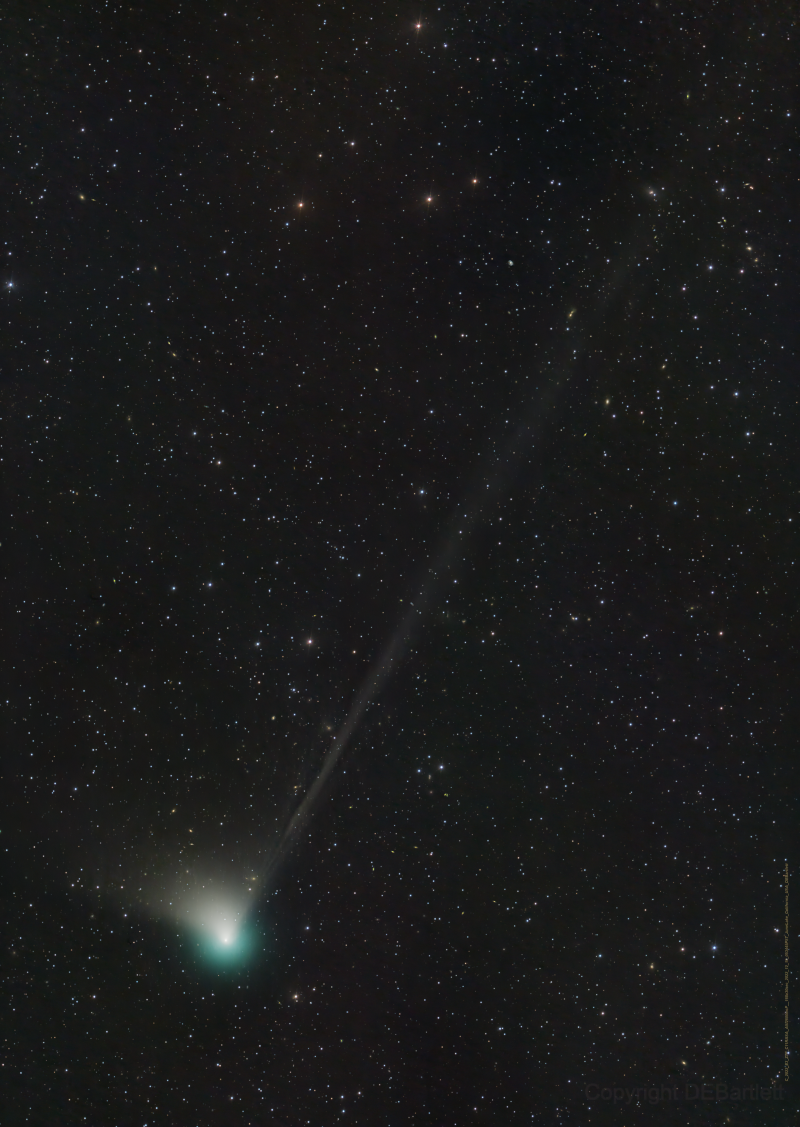COSAM News Articles 2023 January Auburn postdoctoral researcher observing rare green comet that even amateur sky watchers can see in northern sky
Auburn postdoctoral researcher observing rare green comet that even amateur sky watchers can see in northern sky
A rare green comet is about to pass by Earth, and soon everyone will have a chance to see it.
“This comet is an astronomical gift,” said Youssef Moulane, a postdoctoral researcher in Auburn University’s Department of Physics.
Comet C/2022 E3 (ZTF) was discovered in March of last year by the Zwicky Transient Facility, or ZTF, in California, a 48-inch telescope and camera system designed to scan the entire sky looking for moving objects like asteroids and comets.
On Feb. 2, it will be at its closest point near Earth about 26 million miles away, which is only about a third of the distance from the Earth to the sun.
“Instead of trying to send a spacecraft millions of miles to study a comet in detail, comet C/2022 E3 (ZTF) will be traveling close to our planet, giving us an incredible opportunity to observe it up-close,” Moulane said.
The comet is visible now, but will become brighter toward the end of the month.
“The comet is rare because of its brightness and its closest approach to us,” said Moulane. “The presence of carbonic molecules in the comet is what makes it appear green to the human eye.”
Comets are made up of a variety of dusts, rocks and ice. They heat up and spew gases and dust into a glowing “green” head that can be larger than a planet.
“I am excited to observe this comet to learn more about its chemical composition,” he said. “I will be traveling to Texas to observe the comet, and I will also use other telescopes remotely from different locations [Australia, Morocco and Chile] to determine the rotation period of the comet.”
Comets are frozen leftovers from the formation of the solar system about 4.6 billion years ago.
“I am most interested in learning about the physical properties of the comet, including its nucleus,” Moulane added. “Most of the time, the nucleus of a comet is hidden by its very own coma—a mixture of thick gases that keep us from viewing the innermost of the object.”
As comets approach our sun, they heat up and the ice begins to sublimate. The gas and dust form an atmosphere called a “coma,” making it difficult to see the interior portion of these snowballs in space.
“My goal is to measure the rotation period of the comet by looking at the variation of the activity of the comet with time,” he said.
His research will help to determine the properties of the nucleus and the chemical compounds found in this comet and compare it with observed comets in the past.
Even the most amateur astronomer can observe this comet in the northern night sky.
Moulane shares his advice to novice astronomers to get the best view of the comet.
“Look in the north sky starting from midnight until early morning hours, with binocular or a small telescope to spot the comet,” he said. “The best visibility will be between Jan. 26 through Feb. 3, as the comet will reach its maximum brightness, and don’t forget to use smartphone apps such as SkyMap or stellarium to help you easily locate the comet in the sky.”
Latest Headlines
-
07/09/2024
-
Summer Bridge Program celebrates 21 incoming Auburn students as they prepare for future STEM careers07/02/2024
-
07/02/2024
-
06/17/2024
-
06/07/2024


